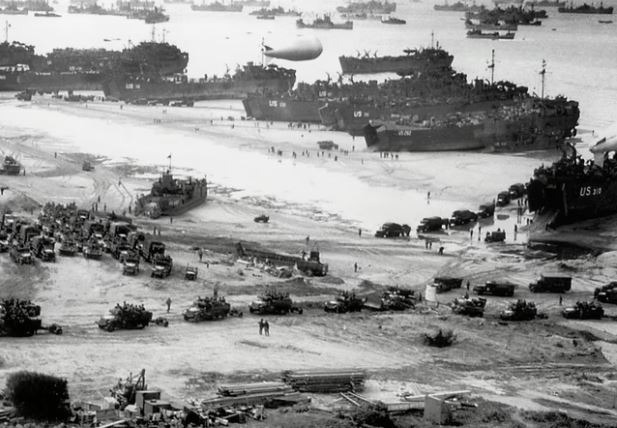Do You Know the Real Story Behind World War II
#WorldWar2, #WWII, #Hitler, #PearlHarbor, #Dday, #Stalingrad, #Holocaust, #HistoryMatters, #AtomicBomb, #Germany, #AlliesVsAxis, #WinstonChurchill, #FranklinRoosevelt, #WorldWarHistory, #UnitedNations, #NeverForget, #GlobalHistory, #Hiroshima, #NaziGermany, #WarAndPeace
KNOWLEDGE & EDUCATION
7/26/20253 min read


World War II, the deadliest and most widespread war in human history, lasted from 1939 to 1945. It involved over 100 million people from more than 30 countries and caused around 70–85 million deaths, which was nearly 3% of the global population at the time. But do you know why it started, who the key players were, and how it reshaped the world forever?
1. The Root Causes of World War II
Treaty of Versailles (1919): After World War I, Germany was humiliated and forced to pay heavy reparations. This created widespread resentment and economic hardship in Germany.
Rise of Dictatorships: Political instability led to the rise of fascist regimes like Adolf Hitler in Germany, Benito Mussolini in Italy, and militarist leaders in Japan.
Economic Depression: The Great Depression of the 1930s worsened global poverty and unemployment, fueling extremist ideologies.
Failure of the League of Nations: The League, created to ensure peace, failed to act against aggressors like Italy (in Ethiopia) and Japan (in Manchuria).
2. Major Axis and Allied Powers
Axis Powers:
Germany (Adolf Hitler)
Italy (Benito Mussolini)
Japan (Emperor Hirohito, PM Hideki Tojo)
Allied Powers:
United Kingdom (Winston Churchill)
United States (Franklin D. Roosevelt, later Harry Truman)
Soviet Union (Joseph Stalin)
France, China, and other nations also joined the Allies.
3. Trigger: Invasion of Poland (1939)
On September 1, 1939, Germany invaded Poland using its blitzkrieg (lightning war) strategy. Two days later, Britain and France declared war on Germany. This marked the official beginning of World War II.
4. The War Spreads Across Continents
1940: Germany quickly defeated Denmark, Norway, Belgium, Netherlands, and France.
1941: Hitler invaded the Soviet Union (Operation Barbarossa), breaking a non-aggression pact.
On December 7, 1941, Japan bombed Pearl Harbor, prompting the U.S. to enter the war the next day.
5. Key Turning Points of the War
Battle of Britain (1940): The first major defeat of Hitler’s forces, thanks to Britain’s air defenses.
Battle of Stalingrad (1942–43): Soviet forces turned the tide by defeating Germany in one of the bloodiest battles in history.
D-Day (June 6, 1944): Allied forces invaded Normandy, France, leading to the liberation of Western Europe.
Battle of Midway (1942): A crucial naval victory for the U.S. over Japan in the Pacific.
6. The Holocaust: A Human Tragedy
Under Hitler's regime, 6 million Jews were systematically murdered in what became known as the Holocaust. Millions of others—gypsies, disabled, political prisoners, and minorities—were also persecuted in Nazi concentration camps.
7. The Atomic Bomb and the End of War
On August 6 and 9, 1945, the U.S. dropped atomic bombs on Hiroshima and Nagasaki, Japan.
These bombings killed over 200,000 people and led to Japan’s unconditional surrender on August 15, 1945.
Germany had already surrendered on May 8, 1945, after Hitler died by suicide.
8. The Aftermath of World War II
United Nations Formed (1945): To prevent future global conflicts.
Cold War Begins: Tensions rise between the U.S. and Soviet Union, leading to 40+ years of geopolitical rivalry.
Decolonization: Many countries in Asia and Africa gained independence in the following decades.
Rebuilding Europe: Through programs like the Marshall Plan, the U.S. helped rebuild war-torn Europe.
9. Lessons Learned and Why It Still Matters
The Cost of Silence: The rise of fascism showed that ignoring early signs of aggression can lead to catastrophe.
Importance of Diplomacy: The need for strong international organizations like the UN became obvious.
Value of Freedom: Millions gave their lives to uphold the principles of liberty, democracy, and human rights.
Conclusion
World War II wasn't just a war of bullets and bombs—it was a battle of ideologies, courage, and survival. It reshaped borders, economies, and global alliances. The pain and heroism of that era still echo in our lives today, reminding us that peace is precious, and history must never be forgotten.
Knowledge
Empowering minds with reliable educational content daily.
Newsletter Signup
© 2025 DoYouKnow. All rights reserved.
Stay Ahead of the Trends – Join Our Newsletter
